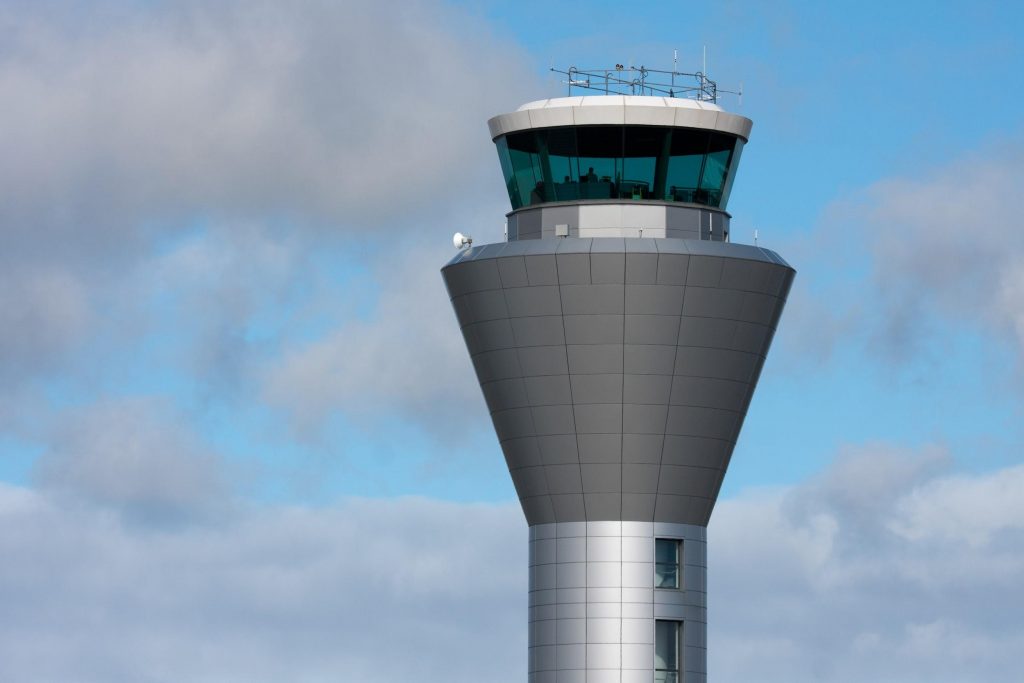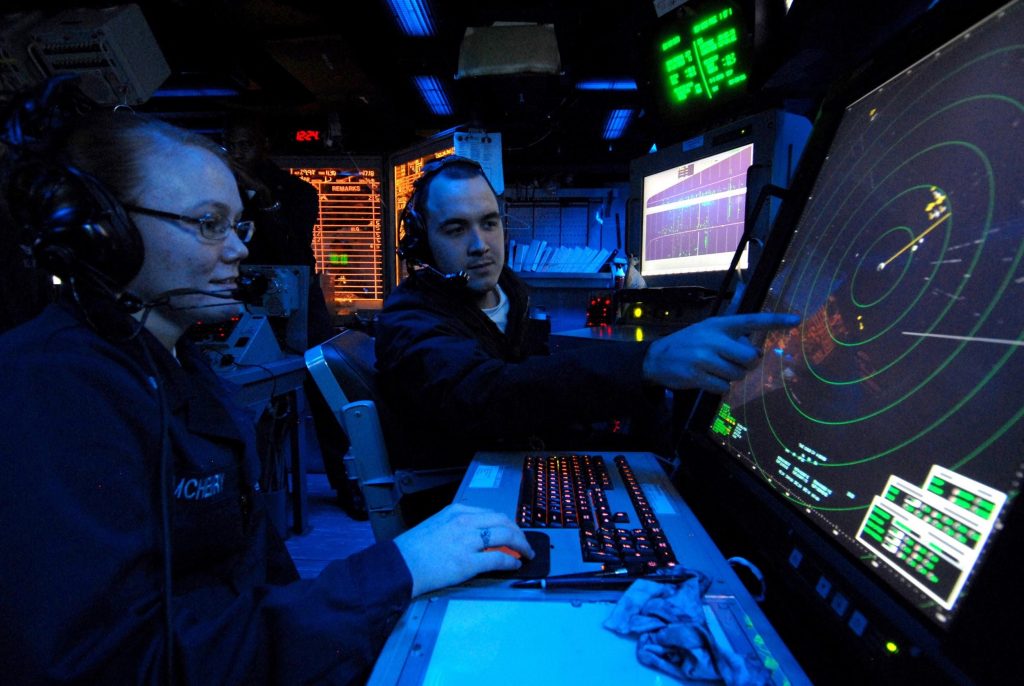InTrans / Oct 28, 2016
‘Green’ transportation innovations: ‘NextGen’ air traffic control
Go! Magazine
 posted on October 28, 2016
posted on October 28, 2016
When it comes to transportation, there’s almost always room for improvement.
But what about when transportation doesn’t improve quickly enough? What happens when transportation technology can’t keep up?
Air traffic control systems may be a good example of this. Air traffic control is a service where controllers—based on the ground—can direct aircraft moving both on the ground and through controlled airspace.
Many air traffic control systems will see some major updates in the coming years. The NextGen program is the latest piece of the puzzle: What’s the best way to control the crowded airspace? Did you know that there are typically 5,000 to 6,000 aircraft flying through the sky from about 6 a.m. to 8 p.m.?
Air traffic control: A history
So where did it all begin?
Radar technology was the first invention to revolutionize air traffic control. It consists of a transmitter and receiver that emit radio waves and process their reflections to a visual display, an invention originally developed for military defense.
By 1952, approach and departure controls routinely used radar systems, but when two planes collided over the Grand Canyon in 1956, killing all 128 people aboard, Congress made major upgrades to the national airway system to avoid it happening again. The upgrade, costing $250 million, would accommodate for advancements in radar surveillance.
Two years later, Congress passed the Federal Aviation Act of 1958, which created the Federal Aviation Agency (now Federal Aviation Administration or just FAA). The law gave the FAA national authority to regulate all aspects of civil aviation, which includes the construction and operation of airports and management of air traffic, among other responsibilities.

Computers, brand new at the time, were introduced experimentally in 1956, and within a few years the FAA was able to develop complex air traffic control systems. From 1956 to 1975, the FAA installed a computerized system that, for the first time, could produce data on the plane’s’ position, speed, and altitude.
This new development allowed controllers to monitor the flights in real-time. By 1975, all Air Route Traffic Control Centers, plus the 61 busiest airports at the time, were receiving this real-time, in-flight data on their computers via radar. With the new system, controllers could detect and correct any variations in flight plans. 1
What is NextGen?
Air traffic has improved in the last 40 years.
Global positioning systems, called “GPS,” have served as an essential component of modern air navigation. Plus, GPS plays an essential role in the FAA’s NextGen program for pilots.
NextGen is a multi-phased program revamp of multiple aspects of the air traffic system’s infrastructure and technology in the United States. It’s goal is to make the system safer, more cost-effective, and more efficient.
With the NextGen program, GPS data is used to give pilots their exact location, using triangulation to determine exactly where the aircraft is in the sky. The GPS data obtains precise three or four-dimensional location data. The pilot typically views the data on a display in the cockpit of the aircraft and uses it to make decisions based on weather data and the positions of other aircraft in the sky.
Why NextGen?
So why should you care about the NextGen program?
A list of good things come as a result of its implementation. Pilots are able to make shorter, safer, and more direct flights to their destinations. These precise flight paths— along with less time spent on taxiways—improve aircraft fuel efficiency and can ultimately save companies money while protecting the environment from exposure to extra fuel emission.

Then passengers benefit, too, since they spend less time in the air and less time waiting for planes to arrive and depart. Flight delays and cancellations within the United States cost travelers an estimated $16.7 billion annually.2 The NextGen system has already saved these airlines and passengers about $1.6 billion, and the FAA expects NextGen to deliver $160.6 billion in benefits through 2030.3
Looking toward the future
So what does this mean for air traffic controllers?
Using the NextGen system, air traffic controllers can track up to 1,900 aircraft at a time compared to 1,100 with the old system. At the Hartsfield-Jackson Atlanta International Airport, 12 more planes can depart per hour. In Las Vegas, the new systems have cut landing time by 10 minutes. 4 And those aren’t the only success stories.
So, is the NextGen program the answer to navigating the crowded skies?
U.S. Navy air traffic controller at work. Photo by Mass Communication Specialist 2nd Class Greg Johnson
Only time will tell, and in the coming years we will be able to see the effects for ourselves. Time and time again we come back to the idea that the future must be “green” in order to maintain itself, and NextGen could be another piece to the puzzle.
Related links
(Video) FAA and careers in aviation: http://www.faa.gov/tv/?mediaId=591
5 myths about air traffic control: http://www.usatoday.com/story/travel/flights/2014/12/08/air-traffic-control/19967271/
Citations
- http://www.natca.org/images/NATCA_PDFs/Publications/ATCHistory.pdf
- http://www.latimes.com/local/lanow/la-me-ln-metroplex-system-20160902-snap-story.html
- https://www.faa.gov/nextgen/
- http://www.latimes.com/local/california/la-me-air-traffic-control-20150616-story.html
By Hannah Postlethwait, Go! Staff Writer